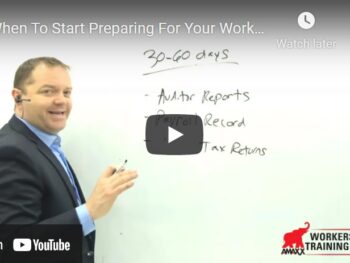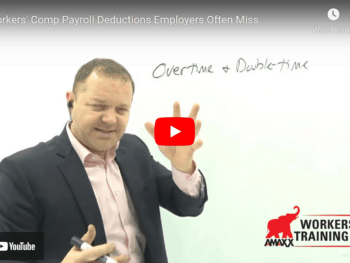On November 9, 2009 the Insurance Commissioner approved certain changes to the California Experience Rating Plan. Beginning on January 1, 2010 WCIRB will change certain elements of the experience rating formula.
Rating Plan Changes
1) In experience rating, an actual loss is separated into two components – primary and excess. The primary component represents the frequency of claims and has a disproportionate impact on smaller employers. Excess losses are a proxy for severity. They most influence larger employers.
In keeping with the rest of the country, the formula to determine actual primary and excess losses is finally changing. In the past a claim was split into the two components based on the formula: “Primary losses equal actual incurred loss * 9000/actual incurred loss+7000.” Excess losses were the difference between actual and primary loss.
For all ex mods effective on and after January 1, 2010, primary losses will be calculated as the first 7000 of any single claim. Excess losses will be the difference between the actual incurred loss (up to the $175K maximum) and 7000. In the past, a very large claim could have a primary value of 9000. The 7000 maximum will benefit small employers with severe claims while, at the same time, disadvantaging small employers with few or no large claims.
This change simplifies experience rating and recognizes the elegance of a similar change incorporated by the NCCI in 1990. (Perhaps some day California will even join Interstate experience rating.)
An Example:
Under the old plan a $12,500 loss had a primary component calculated as “12500*9000/2500+7000,+ or 5769.” The excess component was 6731 (12500-5769). Under the new plan, primary losses are 7000 and excess losses are 5500.
2) Two factors relating to an employer’s size, as determined by expected losses, have changed. The factors are Ballast and Weighting values. Ballast is a leveling value, used to keep a mod relatively stable from year to year.
Unlike other states, California Ballasts decrease with the employer’s size. Beginning at about 10,000 for the smallest employers, Ballast descends to zero for an employer with expected losses above approximately 38,000. In other states Ballast increases with expected losses.
Weighting value (called ‘W’) also refers to an employer’s size. It measures the amount of excess losses, both actual and expected, that comprise the experience rating formula. The larger the employer, the higher its ‘W’ and the greater impact large losses have on the ex mod.
At first glance, the new plan assigns greater credibility to smaller employers than in the past. If this turn out to be correct, the actual claim history of smaller employers will have a greater impact on their mod than in the past. Their range of modifiers will increase from unity (1.00). Here you can find a comparison of Ballasts and Weightings under the old and new plans.
3) WCIRB has changed the methodology it uses to determine Expected Loss Rates (and presumably Discount Rates). It is too soon to tell how these changes will impact an employer’s ex mod or if certain firms or industries will be advantaged at the expense of others.
4) Finally, beginning on January 1, 2011, the ex mod worksheet will include a ‘loss free mod’ – what the ex mod would have been had there been no losses. Presumably this will provide added incentive for employers to increase emphasis on safety. It remains to be seen if this will be substantive or cosmetic.
Guest Author Norman Goodman has a 30-year background in classification methodology, payroll auditing and procedures, experience modifications, guarantee cost and retrospective rating, insurance company procedures and methods in the workers’ compensation premium recovery business. Major industries include construction, hospitals and nursing facilities, and manufacturing. Visit www.zapcomp.com for more information on consultations with employers to recover workers’ compensation premium overcharges contained within policy classifications, payrolls and experience modification.
By: Anthony Van Gorp, private investigator with 25 years experience.
TD Calculator: www.ReduceYourWorkersComp.com/transitional-duty-cost-calculator.php
WC Calculator: http://www.reduceyourworkerscomp.com/calculator.php
Do not use this information without independent verification. All state laws vary. You should consult with your insurance broker or agent about workers’ comp issues.
©2009 Amaxx Risk Solutions, Inc. All rights reserved under International Copyright Law.













